#gilia tricolor
Text

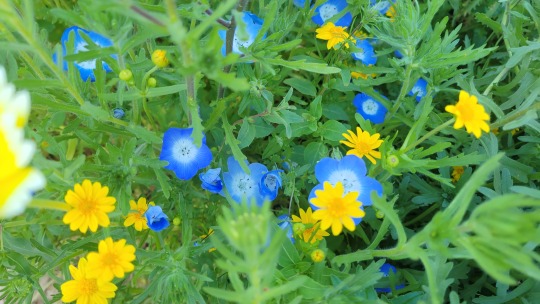
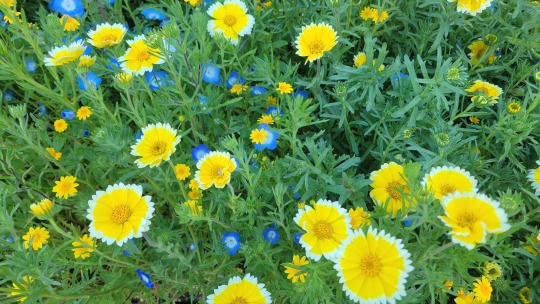
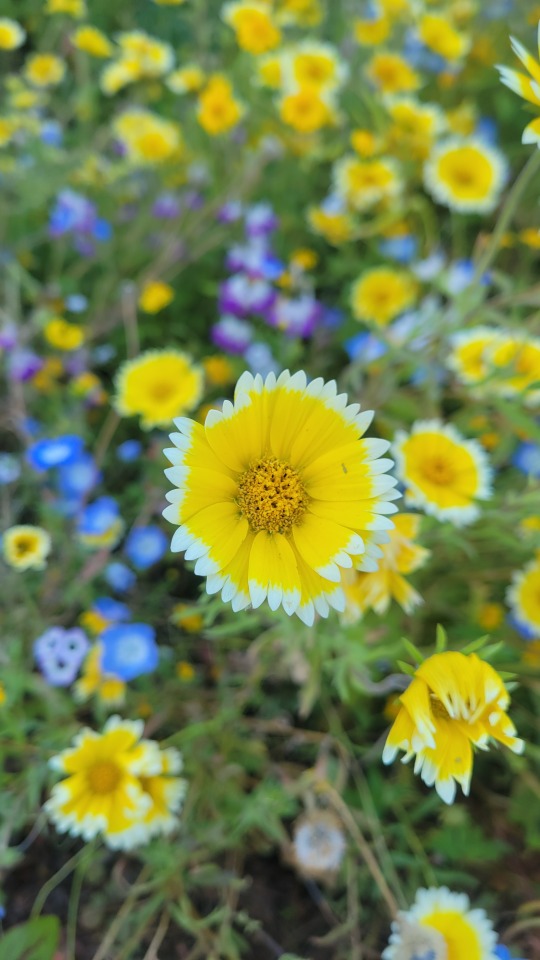



#my photos#flowers#flowercore#california#layia platyglossa#nemophilia menziesii#gilia tricolor#california poppies#eschscholzia californica#collinisia heterophylla#california wildflowers#baby blue eyes#bird's eye#california goldfields#lasthenia californica#Chinese houses#desert marigolds#tidy tips#my post
9 notes
·
View notes
Text
In My San Diego Garden and Kitchen
Garden surprises delight me each week. When tidying one of the perennial beds last week, we came upon two robust alpine strawberry plants. Though we’ve had a less satisfactory, low vining variety elsewhere, these were a spring surprise. It’s been nearly a decade since they were garden regulars.
We suspect the seeds in the soil waited for the “just right” conditions of cold and winter rain to germinate and grow into these dainty plants. This week they’ll receive some compost, a smidge of organic fertilizer and fresh mulch. Garden serendipity.
Most years in late April I’d be readying the raised beds for peppers, tomatoes, eggplant, cucumbers, zucchini and beans. Instead, with our cool and cloudy April various garden greens thrive, encouraged by drizzle and overcast skies. Harvested rainwater encourages continued good production.
I thickly sowed a row of Bright Lights chard, anticipating harvesting it as baby chard. The plants had other aspirations and have grown quite large. My vacation garden tender is especially fond of chard and I had forgotten how much I like it.
I have four blocks of Catalina spinach (Renee’s Garden) growing now. With succession sowing, one wanes, one is several weeks away and two produce bountifully now. In healthy, compost-enriched soil an 18 x 18 inch scatter-sown block can be very productive.
Salads are a cinch with so many choices.
Kumquat slivers simmered in a half-strength simple syrup top waffles or pancakes, Greek yogurt or bananas.. It freezes well and thankfully, kumquats store for a few weeks in the fridge.
Two other garden stars from last week: Violetto artichoke from Italy and Gilia tricolor, a California native.
Check the What I’m Planting Now page as I think spring in the garden. Then head to Harvest Monday, hosted by Dave at Happy Acres Blog and see what garden bloggers around the world harvested last week.
To leave a comment, click on “Leave a comment/Show comments,” enter the comment, then insert your name. Finally, click on “Comment as Guest” to post comment.
#alpine strawberries#garden surprises#Little Gem lettuce#Bright Lights chard#Catalina spinach#spring garden salads#kumquats#violetto artichoke#gilia tricolor
1 note
·
View note
Photo

Bird's Eyes (Gilia Tricolor) Organic, Non-GMO B50 Count: 50 seeds Bird’s Eyes is a California native annual that grows 12 to 18 inches tall. It does best in full sun with dry to moderate moisture. Flowers are fragrant white flowers that fade into lavender tipped blooms. MORE INFO: Sowing: Direct sow in late fall, planting just below the surface. For spring planting, mix the seed with moist sand and store it in the refrigerator for 30 days; direct sow. To start indoors, sow seeds in a flat or individual peat pots 6-8 weeks before the last frost; keep the soil lightly moist and at a temperature of 70 degrees F until germination, which usually occurs within two weeks. When the weather has warmed and the seedlings are well established, transplant outdoors. Growing: Keep the soil moist as the seedlings develop, which will happen rather slowly at first. Mature plants tolerate drought well, preferring hot and dry conditions; do not overwater, since this can cause disease. This plant adapts well to areas with rocky or sandy soil. It will self-sow, and is extremely attractive to butterflies and bees. Name: Bird's Eyes Other Common Names: bird's-eyes, bird's-eye gilia, tricolor gilia Scientific Name: Gilia Tricolor Color: White & Lavender Flowers Hardiness Zones: 3-10 Plant Seeds: Outdoors After Frost or Indoors Weeks Before Last Frost Plant Height: 12"-18" Plant Spacing: 6 - 12" Cycle: Annual (Will reseed itself) Bloom Season - Summer Light Requirements: Full Sun Soil & Water Preferences: Average Other: Attracts bees, birds, & butterflies, http://springsofeden.myshopify.com/products/birds-eyes-gilia-tricolor-organic-non-gmo-b50
#Ice plant#Dorotheanthus#bellidiformis#Crown Daisy#Chrysanthemum#FOXGLOVE Flower#Lady's Glove#Digitalis purpurea#BIRDS EYES#Gilia Tricolor#Flower Seeds
0 notes
Note
The Gilia tricolor, or the Bird's Eye Gilia, is a flower that has a yellowish golden throat with white petals tipped with a lavender to pink to violet tips. These flowers can also smell close to something chocolate.
Was looking at random flowers on google and saw this flower and thought 'Hey, someone on bluie's blog described something similar to that! How about I let them know it actually exists!'
!!!! What a pretty flower too!
I do remember someone describing something similar- wah i wish i remembered who/what
12 notes
·
View notes
Text


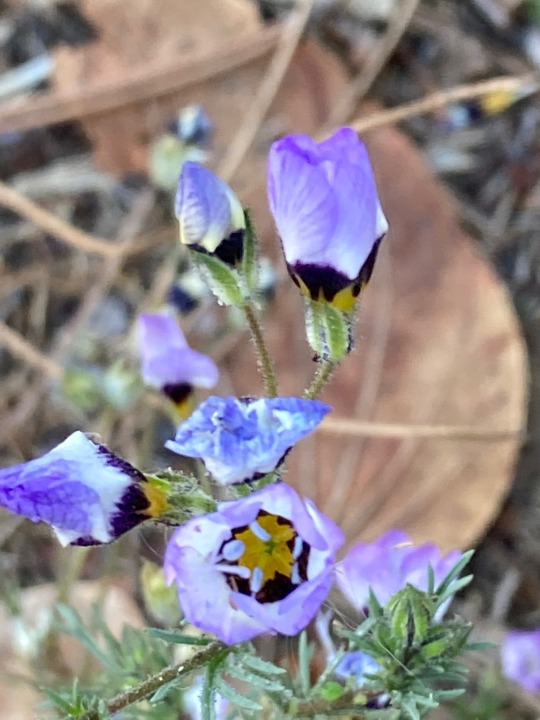
2 notes
·
View notes
Photo

i got my mom wildflower seeds for christmas and they’re starting to bloom :)c
#i immediately forgot what i got her but i'm pretty sure this is phacelia and i want to say five spot but the pattern is wrong#maybe bird something phacelia.... i feel like one of them was a bird name#EDIT: okay it is five spot! it's just one of the phenotypes i think#and then the other one i was thinking of is gilia tricolor#i also got her some type of lupine....#i wanted to get her moon poppy but they were out
4 notes
·
View notes
Photo

Gilia tricolor, kirjokiurunkukka
#bird's eyes#annual#polemoniaceae#turku botanical garden#original photography#photographers on tumblr
5 notes
·
View notes
Photo
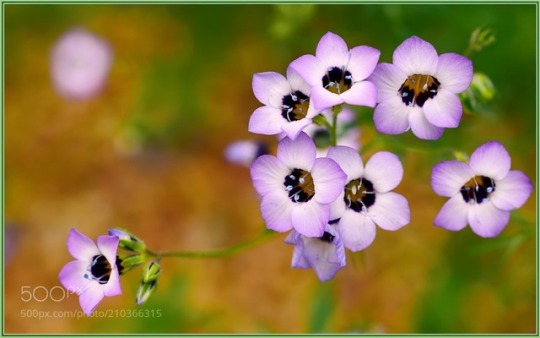
Fourcolor Macro: Desert Beauties by tdlucas5000
0 notes
Text
In My San Diego Garden and Kitchen
There are three more similar clumps of celery lingering in the garden as the cool season crops finish. Next year, I plan to cut two of them earlier for both improved quality and to spread the harvest.
This is after the critter-worthy portions were removed (for the bunnies, guinea pigs and tortoise). I separated what was best for eating raw and what would be used in cooking. Cream of celery soup is on the menu this week.
I’m soaking the heels of the celery to plant in a container for a late spring crop. It will need a partial shade location, rich soil and moist soil. Read the how-to at an earlier post, Celery in SoCal Summer.
I keep thinking the broccoli has finished its run but then there is a new flush of side shoots and they’ve not been overrun by aphids. I will likely take the remaining plants out this week and prep the bed for warm season crops.
Lettuce is luscious this time of year. Thankfully with measures to shade my three areas of lettuce, none of them bolted with two days in the high 80’s.
The ‘Violetta’ purple artichokes are a culinary and visual delight. The thorns are wicked but are easily snipped with kitchen shears before steaming.
To keep the color harmonies going, I’ll toss in Gilia ‘Tricolor’, a California annual wildflower and a spring fave. It’s also known as Bird’s-eyes Gilia, is easy to grow and reseeds reliably.
The carrots compete with other vegetables that need to be consumed more urgently but I keep some in the fridge for salads and lunches. A selective harvest of those up to size could be this week.
And again the flower garden and my vegetables are on the same color vibe.
You may enjoy seeing what other garden bloggers around the world harvested last week at Harvest Monday hosted by Dave at Happy Acres blog.
To leave a comment, click on “Leave a comment/Show comments,” enter the comment, then insert your name. Finally, click on “Comment as Guest” to post comment.
1 note
·
View note
Photo

Desert Beauties by tdlucas5000
0 notes
Photo

Desert Beauties by tdlucas5000 http://ift.tt/2qsxgoL #macro
0 notes
Text
Bird's Eyes - Gilia tricolor Non-GMO Seeds
Bird’s Eyes – Gilia tricolor Non-GMO Seeds
Beautiful purple flowers with a white throat! A wonderful flower for drying, it thrives in dry conditions. The fragrance attracts hummingbirds and bees.
Prepare a bed of loose soil. Sprinkle seeds in prepared area. Keep moist until seedlings are about 4″ tall. Thin to 12″ apart.
SEED INFORMATION:
Life-cycle: annual
Sun Requirement: sun
Spacing: 12″
Depth: surface
Packet Weight: 300mg
Bloom…
View On WordPress
0 notes
Photo

leptosiphon androsaceus, leptosiphon densiflorus, gilia tricolor - high resolution image from old book.
0 notes
Photo









Red Hills, March 31 2017 with Antonio and Jessica. Lasthenia and Ceanothus cuneatus, Dichelostemma capitatum, a spider on a Plagiobothrys, the scene, Lasthenia and Gilia tricolor, Mimulus douglasii?, us, a long-decomposing pine, Primula.
#Red Hills#photography#professional#antonio#jessica#primula#lasthenia#gilia#polemoniaceae#Asteraceae#mimulus#phrymaceae#ceanothus#rhamnaceae#pinus#plagiobothrys#boraginaceae#dichelostemma#asparagaceae#spider#california
0 notes
Text
Scenes from My Native Plant Garden
Enjoy the California natives blooming now in my garden. Above, Carpenteria californica ‘Elizabeth, also known as bush anemone.
Gilia tricolor, probably my favorite annual native wildflower.
Erigeron glaucus ‘Cape Sebastian’ Also known as beach aster.
Lupinus succulentus also known as California lupine.
Penstemon ‘Margarita BOP’
Mimulus ‘UCSC’ also known as sticky monkeyflower.
Another monkeyflower.
Clarkia unguiculata also know as farewell to spring.
Keep California looking like California.
4 notes
·
View notes
